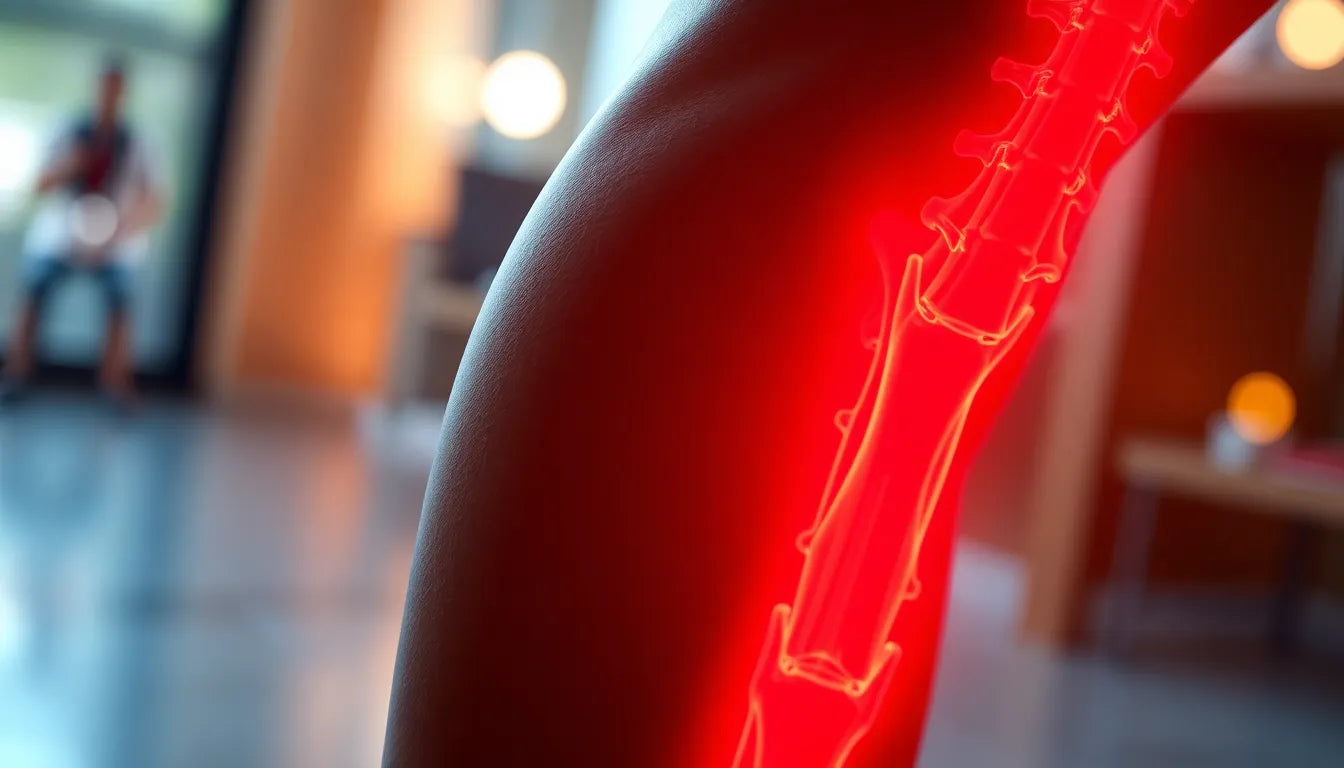Understanding the intricacies of a herniated disc is essential for anyone seeking relief from its often debilitating symptoms. A herniated disc occurs when the soft, gel-like center of a spinal disc pushes through a tear in the tougher exterior casing. This condition can lead to a range of uncomfortable symptoms, including pain, numbness, and weakness, often radiating from the back to the limbs. These symptoms can significantly impact daily activities and overall quality of life.
the role of massage therapy in managing herniated disc symptoms
When faced with the challenges of a herniated disc, many individuals turn to massage therapy as a supportive treatment option. Massage therapy is renowned for its ability to provide relief from muscular tension and pain, making it a popular choice for those dealing with herniated disc symptoms. While it does not address the underlying structural issue of the disc itself, massage can play a crucial role in symptom management, offering temporary relief and improving the patient's ability to cope with discomfort.
The purpose of this blog post is to delve into the ways massage can help ease the symptoms associated with a herniated disc. We will explore the benefits of massage therapy, including its potential to alleviate pain, improve circulation, and promote muscle relaxation. Additionally, we will discuss the limitations and precautions that should be considered when incorporating massage into a treatment plan for herniated disc symptoms. By understanding both the benefits and the boundaries of massage therapy, individuals can make informed decisions about their care and work towards finding relief from the discomfort of a herniated disc.
exploring massage as a complementary treatment
Massage therapy is often viewed as a complementary treatment, meaning it works best when integrated into a broader, holistic approach to managing herniated disc symptoms. This can include physiotherapy, posture correction, and, in some cases, medical interventions. It's important to note that while massage can provide significant benefits for symptom management, it is not a standalone cure for the herniated disc itself. Instead, it offers a supportive role, helping to enhance overall well-being and improve the patient's quality of life.
As we explore the various aspects of massage therapy in relation to herniated disc symptoms, we will highlight both the potential benefits and the necessary precautions. This will ensure that individuals seeking relief can do so safely and effectively, maximizing the positive impact of massage therapy on their journey to recovery.
pain relief and muscle relaxation through massage
One of the primary benefits of massage therapy for those suffering from a herniated disc is its ability to offer pain relief and muscle relaxation. The gentle manipulation of muscles and tissues helps to reduce muscle tension, which can significantly alleviate the pain associated with this condition. By targeting the areas surrounding the herniated disc, massage can help to reduce the strain on the affected nerves, providing much-needed relief.
Physiologically, massage therapy stimulates the release of endorphins, the body's natural painkillers, which can enhance mood and promote a sense of well-being. This endorphin release, combined with increased relaxation, can make it easier for individuals to manage their symptoms and improve their overall quality of life. Additionally, by relaxing the muscles, massage therapy can improve flexibility and reduce the incidence of muscle spasms, which are common in those with herniated discs.
enhancing circulation and supporting healing
Massage therapy is also instrumental in improving circulation, which plays a crucial role in the body's natural healing processes. By promoting blood flow to the affected areas, massage helps deliver essential nutrients and oxygen that support tissue repair and reduce inflammation. While this does not directly heal the herniated disc, it aids in managing symptoms and supports the body's ability to repair itself over time.
Improved circulation also helps to flush out toxins from the muscles, further contributing to pain relief and muscle relaxation. This enhanced blood flow can lead to quicker recovery times and a reduction in the severity of symptoms, allowing individuals to engage more comfortably in daily activities.
choosing the right massage techniques
When considering massage therapy for herniated disc symptoms, it is essential to choose the appropriate techniques. Swedish massage is often recommended for its gentle approach, focusing on relaxation and light pressure to ease muscle tension. This technique is particularly beneficial for those new to massage therapy or those with heightened sensitivity due to their condition.
Deep tissue massage, on the other hand, targets deeper muscle layers and can be effective in relieving chronic tension. However, it is crucial to ensure that this technique is applied cautiously and only by trained professionals, as improper application can exacerbate symptoms. Importantly, therapists should avoid applying direct pressure on the spine itself, focusing instead on the surrounding soft tissues to prevent any potential harm.
integrating massage into a comprehensive treatment plan
Massage therapy should be viewed as a complementary component of a broader treatment strategy for herniated disc symptoms. It can work alongside physiotherapy, posture correction, and medical interventions to provide a holistic approach to managing the condition. By integrating massage with other therapies, patients can experience a more comprehensive relief from symptoms and improve their overall health and well-being.
While massage offers significant benefits, it is not a standalone cure for herniated discs. Patients should maintain open communication with their healthcare providers to ensure that all aspects of their treatment plan are coordinated and effective. This collaborative approach can help individuals achieve the best possible outcomes and lead a more comfortable and active life despite their condition.
additional benefits of massage therapy
Beyond pain relief and muscle relaxation, massage therapy offers several additional benefits for individuals dealing with herniated disc symptoms. One such advantage is stress reduction, which can be crucial for overall health and recovery. The calming effects of massage can help lower stress levels, leading to improved mental well-being and better sleep quality. Enhanced sleep can, in turn, aid the body’s natural healing processes and improve daily function.
Massage therapy also helps in reducing muscle spasms, a common issue for those with herniated discs. By easing muscle tension and promoting relaxation, massage can decrease the frequency and severity of spasms, allowing for greater comfort and mobility. Furthermore, regular massage sessions can increase range of motion and flexibility, helping patients maintain an active lifestyle and prevent further injury.
risks and precautions
While massage therapy can be highly beneficial, it is essential to be aware of potential risks and take necessary precautions. Incorrect techniques or excessive pressure can potentially worsen symptoms, particularly if applied directly to the spine. It is crucial to consult healthcare professionals before starting massage therapy, especially for individuals with severe symptoms or complex medical histories.
Choosing a qualified massage therapist with experience in treating spinal injuries is vital. Skilled therapists will know how to apply the appropriate techniques safely and avoid any actions that could exacerbate the condition. Open communication with the therapist about symptoms and comfort levels is also important to ensure a safe and effective treatment experience.
practical tips for integrating massage with other treatments
Integrating massage therapy into a broader treatment plan can enhance its benefits and contribute to overall symptom management. Complementary activities such as ergonomic adjustments, gentle exercises, and posture correction can support the effects of massage and promote better spinal health. For instance, using ergonomic furniture at work or home can help maintain proper posture and reduce strain on the back.
When selecting massage techniques and therapists, consider individual needs and preferences. Swedish massage is generally recommended for relaxation and stress relief, while deep tissue massage may be more suitable for addressing chronic tension. However, it is crucial to ensure that any chosen technique is applied safely and appropriately for the specific condition.
frequently asked questions
Can massage help a herniated disc?
Massage helps manage symptoms but does not cure the disc itself. It aids in pain relief, relaxation, and improved circulation.
What types of massage are best for herniated disc symptoms?
Swedish and deep tissue massages are commonly recommended, focusing on surrounding muscles rather than direct spinal pressure.
Are there any risks associated with massage for herniated discs?
Incorrect techniques or too much pressure can worsen symptoms. Always consult a healthcare professional and use qualified therapists.
How often should I get a massage for herniated disc symptoms?
Frequency depends on individual needs and professional advice. Typically, regular sessions may offer more consistent relief.
Can massage replace other treatments for herniated discs?
No, massage should be part of a comprehensive treatment plan that includes other therapies and medical interventions if necessary.
Sources
- Prestige Physio. (2023). "Massage Therapy for Herniated Discs."
- Moyer Total Wellness. (2023). "Understanding Massage Risks for Herniated Discs."
- CareSpace Health. (2023). "Benefits of Massage for Herniated Disc Patients."
- MoreGoodDays. (2023). "Managing Herniated Disc Symptoms with Massage."
- Deuk Spine. (2023). "Cautions on Massage Therapy for Herniated Discs."


















